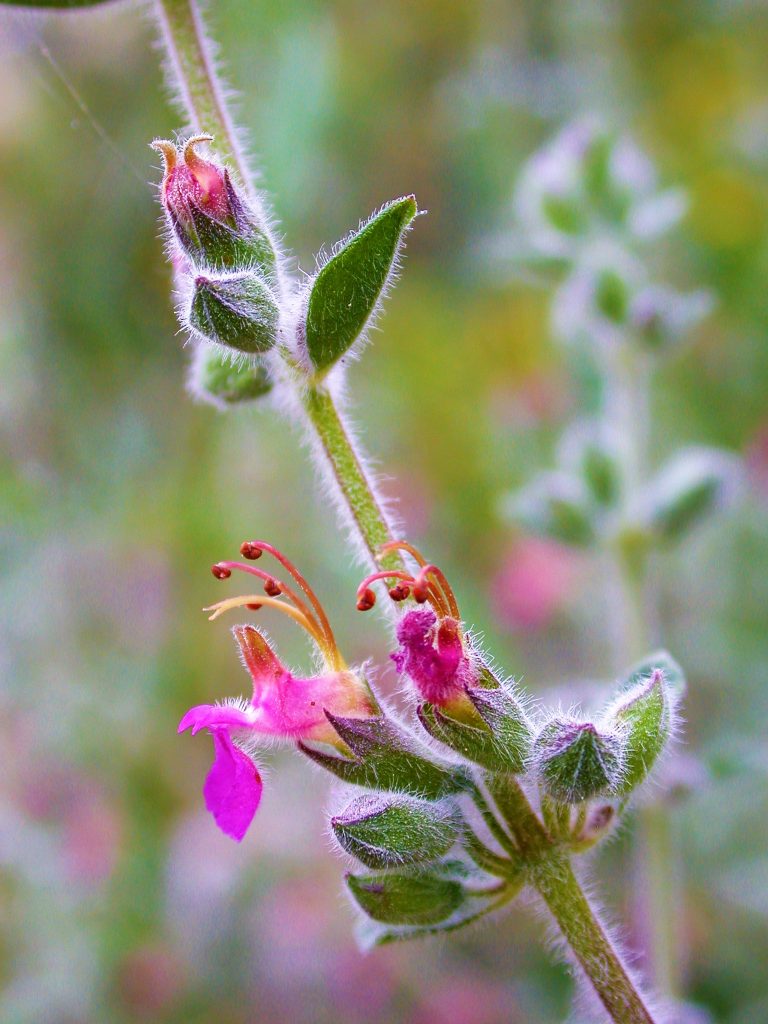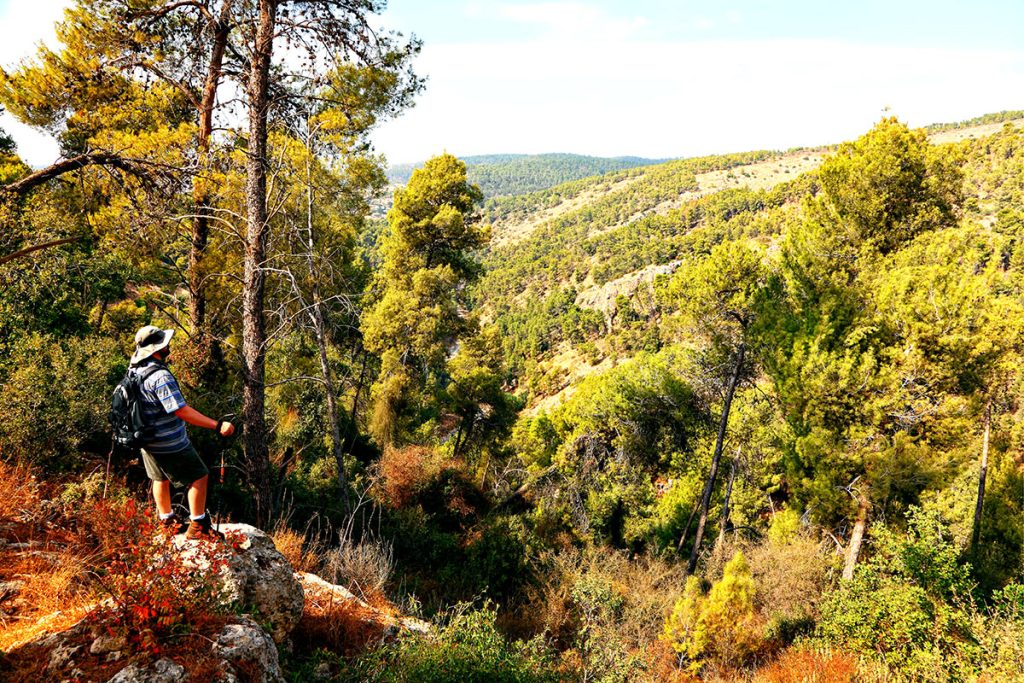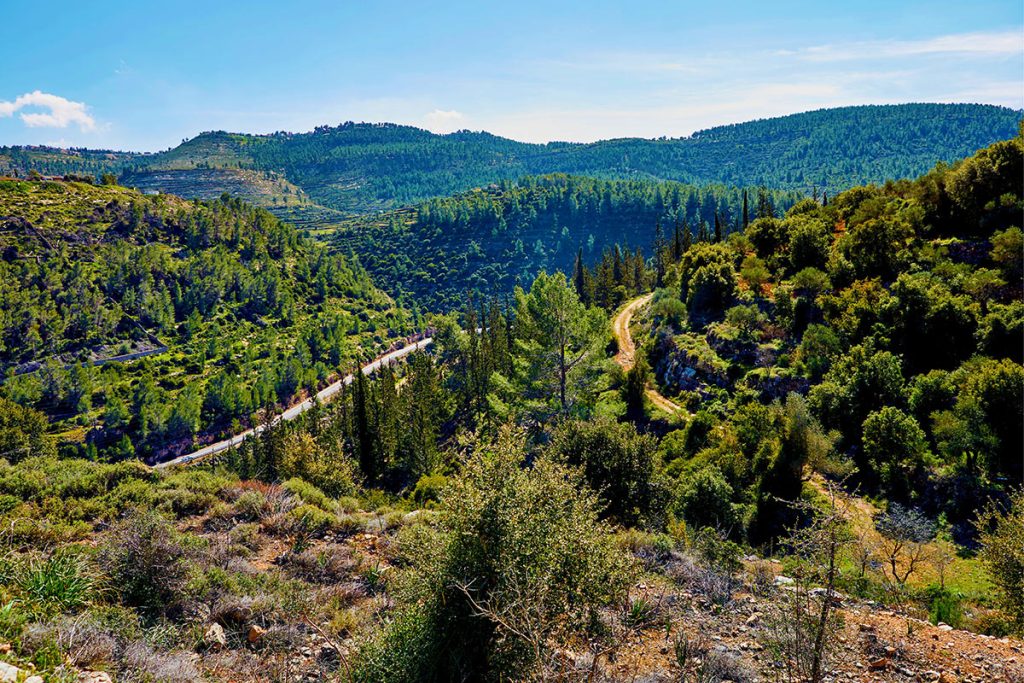Har Hatayasim is a small reservation but worth visiting in the Judaean Hills. My guided tours start from the top of Mt. Hatayasim that my guests could enjoy the 360° view overlooking the Hills of Judea. We can see Mt. Hebron, which is the highest summit in the area, when you’ll start walking from the mountain, which is about 796 meters above sea level, towards the Tzuba stream. The walk is all downhill and quite comfortable. On our way down, we will be accompanied by the typical flora you can find in more of the Mediterranean forests, woodland, and scrubs.
Har Hatayasim Nature Reserve: Why Tour Har Hatayasim?
By the way, so that Mediterranean forests would form, certain conditions need to be met—for example, climate conditions, type of soil, and kind of rocks—also things like altitude, the direction towards the sun, and of course, the human factor. The climate has to be is usually a short winter, humid and cold, and a prolonged summer, which is hot and dry. Precipitation is around 400-1000 mm per year.
Second, the rock is always sedimentary rock like Limestone, Dolomite, Chalk, Marlstone, etc. The type of soil to be found in the area of the Judean Hills is Rendzina, which is common to be found in karst and mountainous regions. Rendzina is humus-rich shallow soil that is usually formed from a carbonate-rich parent material.
Har Hatayasim – An Abundance of Flora and Fauna
Now according to the ecological succession, the first would come in the Mediterranean habitat are shrubland. In the Judean Hills, you would find, for example, Pistacia lentiscus, also known as mastic, conehead thyme that sometimes is used to make the known Middle Eastern spice mixture, Za’atar. Another plant we could find along our walk is the Bible hyssop, which is the main ingredient in Za’atar. Apart from those herbs and spices, you can also find plants like rockrose.
A plant that Bedouins use to carry in their pockets to use for starting a fire is the African Fleabane, which is also forming the shrub in the Judean Hills. Yet another native to the area is the Spiny Broom Rocky hillsides, and bushy places are his habitat. The tree is endemic to coastal regions of the Levant, especially the lower mountain regions of southern Lebanon, and throughout the hill country of Israel.
The florets were used in ancient times to flavor sesame oil. Al-Tamimi, the physician in the 10th century is describing the process. He writes that in Palestine, it was common practice to collect the yellow florets of the spiny broom. Then it was spread them upon thickly woven sackcloth which laid out in the hot sun, pours over them hulled sesame seeds and cover them with linen sheets while leaving them in this condition until the moisture in the florets has evaporated.
Some More About Har Hatayasim
In this manner, the sesame seeds would absorb the sweet fragrance of the florets. After one or two days, the florets and sesame seeds were then separated, the sesame placed on clean linen garments, being allowed to further dry out from the moisture absorbed by the florets. This process was repeated up to 3 or 4 times, with a fresh batch of florets set out to dry, until at length the pungent flavor of the florets (resembling the taste of vanilla) had been fully imparted to the sesame seeds. The dried florets were then collected and pressed with the sesame seeds to produce a fragrant oil. The oil was formerly stored in glassware vessels, with just enough space left at the top to be sealed with the florets of the spiny broom. Today, the florets are still used by Arabs of the country to flavor butter.
A shrub that takes the place of honor among the plants you can find in the Judean Hills and Israel generally is the Germanders (eucrium capitatum), which blooms from April till August. This plant is used for all kinds of homemade medicine, used mainly by bedouins. A known plant that especially likes the Rendzina soil is.

TEUCRIUM DIVARICATUM THAT YOU CAN FIND IN THE AREA AS WELL









